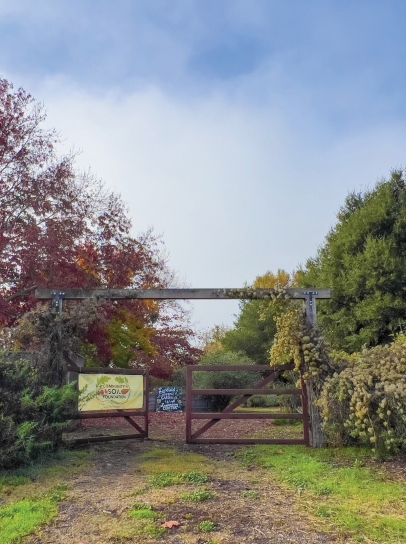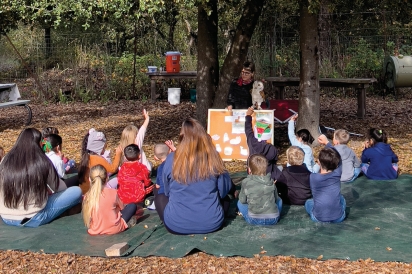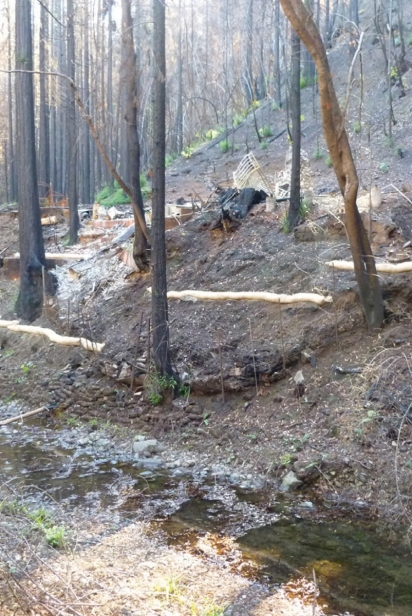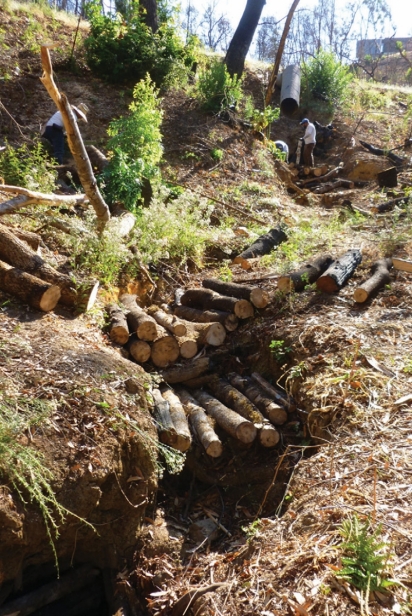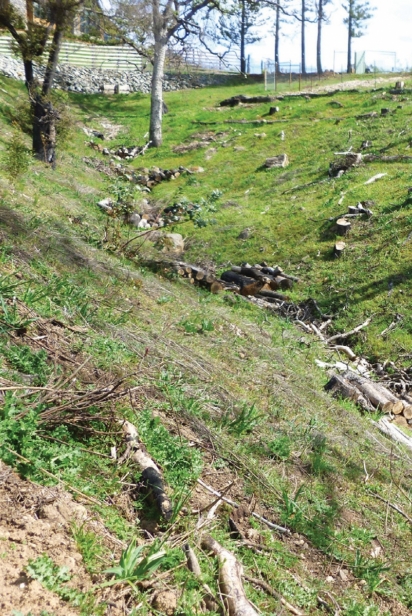The Value of Land-Crafting landscapes while building community
Thinking about land—helping nature grow and thrive while benefitting individual, communal and ecological health—is not top of mind for most suburbanites and city dwellers. Land’s value is often determined by what is built on top of it, not the soil itself. For Paolo Tantarelli and Jeff Shields, the land is the heart of their Santa Rosa–based business and foundation: Community Soil.
The co-founders launched the business in 2009 with the initial intent of running a restorative garden design business. With plentiful opportunities for landscape development projects “behind closed gates,” as Tantarelli puts it, “we kept feeling like we needed to create more access and get out into the community.” A proposal to develop five acres of Santa Rosa public lands into an outdoor education center for school-age children and the Santa Rosa community was accepted in 2012. And just like that, a business developed around the interdisciplinary design methodology known as permaculture added a Foundation to its title.
What is Permaculture?
Permaculture is “a way of analyzing sites for potential and arranging certain structures in a way to maximize beneficial relationships,” says Josho Somine, Community Soil lead designer and certified permaculture instructor. Think holistically, of agriculture integrated with sustainable living. Or working with rather than against nature. Permaculture can (and does) include practices such as regenerative agriculture or ecological stewardship as tools in the toolbox. Community Soil’s built-in interdisciplinary approach and insistence on looking for ways to increase the land’s resilience, similarly include a welter of techniques the team can apply to their various projects.
“It’s a way of thinking,” Somine confirms. For each prong of their business and the Community Soil Foundation, permaculture is the umbrella under which their projects—fire restoration, youth education and a community garden and farm—are developed.
Fire as Pathway to Permaculture
In the aftermath of the 2017 Tubbs Fire and other local fires (Kincade, Glass, Walbridge … ) the business was perfectly positioned to support the community’s recovery. Keeping burnt building materials out of Sonoma’s creeks and watershed was top of mind. So was clearing homesites for safe rebuilding, erosion control and habitat restoration. Hard questions were asked—and continue to be asked—about how to rebuild. A restorative approach was needed.
At the site of a home decimated by the Tubbs Fire, Community Soil’s efforts featured permaculture’s integrated approach. Each element added to the landscape needed to do multiple jobs to stabilize soil, act as a natural pesticide or heal and nurture the soil. The team first surveyed the blackened landscape to determine the best methodologies to apply. With crews and funds reallocated from the business side, the invasive and flammable Scotch broom was removed, scorched trees were mulched, acreage was graded to create swales for water capture. Wattles—interwoven, natural materials used to control sediment when trees are absent or unavailable—were layered with downed trees to limit erosion, support groundwater absorption and enhance toxic containment efforts.
Tantarelli and Shields’s teams learned the hard way how to rebuild—and preserve—Sonoma’s ecosystem. (Their efforts supported over 100 homes.) They wanted to broaden access to their knowledge base.
“How could we have the biggest effect and most outreach in the community with the least amount of money?” Tantarelli says. With video, of course. A grant from the county supported Community Soil Foundation’s development of a series of educational videos and workshops—the Post-Fire Land Regeneration Video Series—to widely support Sonoma’s recovery. Videos on toxic containment, including how to set wattles, are available on their website.
Youth Education as a Facet of Permaculture
Mark West Elementary School, which Tantarelli attended and where his sister currently teaches kindergarten, was the business’s first school project. Alongside four acres of “agroforestry interface” sits a one-acre organic garden with outdoor classrooms and a wood pavilion—and plenty of row crops for kids to sample. With a goal to create a space for children to go outside to engage in learning, no matter the subject, the Foundation employs two teachers to work with schoolteachers to support not just outdoor education but all learning.
“Kids were experiencing trauma from fires and the pandemic,” Tantarelli says. “In these areas affected by fire, kids needed places where they can be part of the solution and know what they can do to be helpful.” Spending time in the garden allows space for the youngest among us to slough off stress while bringing the younger generations into the permaculture conversation. Classes are also offered to the public.
An All-Access Community Garden and Farm
The public is also invited to be involved with the Foundation’s community garden and farm, known as the Larkfield Community Garden & Learning Center. Unlike other programs where individuals rent a plot, the center employs a full-time farm manager, available year-round to work with the community to grow food. “The whole space is for everyone, always,” Tantarelli says. Regular events, like volunteer days of mulching and planting, encourage new people to participate in the work of the one-acre garden.
In the garden, everyone works together, the philosophy and skill set of permaculture guiding the process. Each space within the garden has multiple functions—an approach known as layered regeneration—which gives the garden a less linear appearance than a traditional row-crop farm. As with the fire restoration projects, building resilience into the land—to nimbly handle whatever Mother Nature (or climate change) decides is the new normal—is an important part of Community Soil’s sustainable landscape management.
“The bottom line is: There’s a possibility to grow food for everyone if we do it right,” Tantarelli says. “The solutions are right at our fingertips.”
For more information: www.communitysoil.org (foundation) and communitysoil.com (business)


